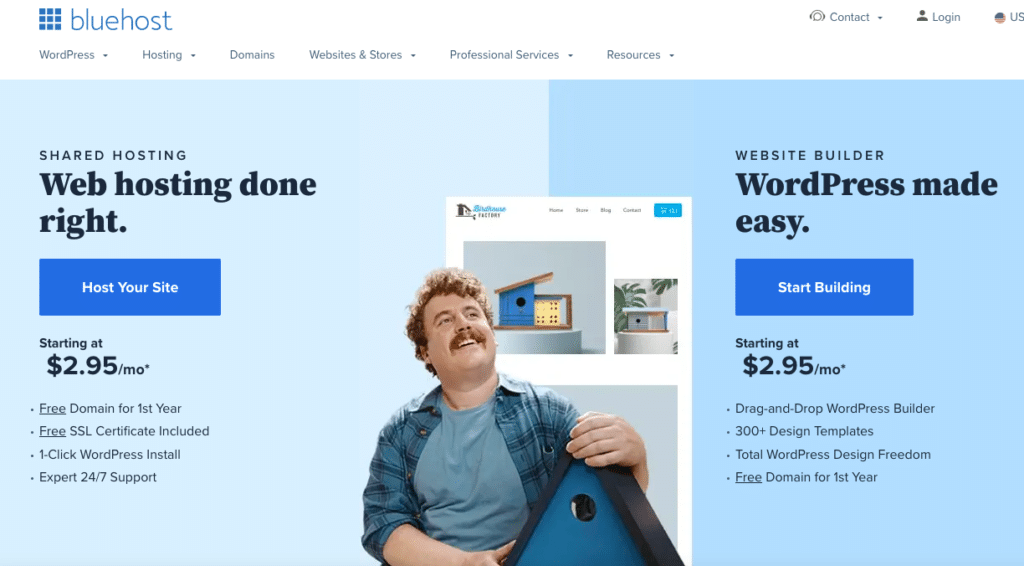When I started my first blog, I had no idea what I was doing. The idea of how to monetize a blog hadn’t even crossed my mind. I just liked the fact that I had a voice to talk about things that I loved.
Affiliate marketing has made a huge impact on my life. It’s allowed me to make money online over the past 15 years.
In fact, I still remember my very first affiliate sale like it was yesterday. It was through the Stubhub affiliate program and was for Hannah Montana tickets.
Hopefully, I didn’t just show my age too much.
As digital marketing continues to grow and evolve, so does affiliate marketing. Affiliate marketing is expected to grow to become an $8.2 billion industry in 2022. It plays a key role in many businesses’ overall marketing strategy.
If you’re not already using affiliate marketing as a way to make money online, now is the time to start.
In this affiliate marketing for dummies guide, I’ll cover everything you need to know about affiliate marketing. Things from the basics of how affiliate marketing works to tips and strategies for building affiliate marketing websites.
By the end of this guide, you’ll have a solid understanding of what it takes to become an affiliate marketer and earn money online.
Ready to start your journey with affiliate marketing? Let’s get started.
Introduction to Affiliate Marketing – How Affiliate Marketing Works
Affiliate marketing is a type of performance-based marketing in which a business rewards affiliates for each customer that makes a conversion through an affiliate link.
The affiliate marketing system has four core pieces: the merchant (also known as ‘retailer’ or ‘brand’), the affiliate network (that contains offers for the affiliate to choose from and also takes care of the payments, hosting affiliate links, etc.), the publisher (also known as ‘the affiliate’), and the customer.
- Retailers can be either an online store, such as Amazon, or a physical store, such as Walmart.
- The affiliate network manages all kinds of individual affiliate programs, deals, and coupons from retailers and brands. It also takes care of affiliate payments. Affiliate networks are a great way to find affiliate programs.
- Affiliates can be either an individual or a company that specializes in affiliate marketing.
- Customers are the people who will actually buy the product or service.
Why Affiliate Marketing?
If you’re new to blogging, you might be looking at several different ways you want to monetize your blog. Affiliate marketing is my favorite because it can be a great way to earn passive income.
So what do I mean by passive income?
Let’s assume you write a blog post that covers the best dog crates. Once the article starts generating traffic each month, the hope is that people will start purchasing the dog crates you recommend. This will lead to income month after month as long as the traffic is still there.
However, one thing to keep in mind is that you really only want to be recommending affiliate products that you’ve actually tried and can honestly recommend to your readers.
Another reason I prefer affiliate marketing over other blog monetization strategies is that you can make money without a ton of traffic.
When you try and monetize with ad networks like Google Adsense or Mediavine, you need to have a lot of people see the ad to make any money. However, you can have affiliate marketing success with very little traffic. Plus, if you’re promoting an affiliate product or service that has a high payout, the revenue can add up quickly.
While there are several ways to monetize a blog, affiliate marketing is easily my favorite.
Affiliate Marketing For Dummies: The Step-By-Step Guide
Now that you have a better understanding of the different pieces of the affiliate marketing system and why it’s a great way to monetize your blog, let’s walk through step-by-step how you can start building your own affiliate marketing business.
Choose your Niche
Choosing a niche is going to be one of the main building blocks for your success as an affiliate marketer.
When I say niche, I’m talking about the topic for your blog. For example, it could be about travel or it could be about crafting. Ideally, you want it to be something specific. Not only will this help you reach a highly engaged audience, but Google is more likely to think of you as a subject expert.
So how do you pick the perfect niche? Ask yourself a few questions.
What am I most passionate about?
When you start a blog, you want it to be about something you’re truly passionate about. This passion will come through in your writing and your readers will be more likely to stick around.
Can I Make Money in This Niche?
You decided to start your blog because you wanted to make money online. That being said, you need your niche to be profitable.
If you’re passionate about frisbee golf, it might be hard to make money. Sorry frisbee golf lovers.
However, if you love to travel or know a lot about personal finance, there is a big market available. Plus, there is a lot of money that can be made.
Do You Know Enough About Your Niche?
Just because you’re passionate about something, doesn’t make you an expert. If you want to become a successful blogger, you need to be an expert on the niche you choose. Otherwise, you need to be in a position to hire writers that are experts.
Build Your Website
Once you’ve decided what niche you want to focus on, it’s time to start a website. Some programs might let you promote their products through social media or other channels, but most affiliate programs, require a website to get started.
If you already have a website, you can go ahead and skip to step 3.
Starting a blog is pretty simple to do. I put together a “How to Start a Blog” guide that will walk you through everything in detail. Here are the highlights.
1. Choose a Domain Name
The first thing you need to do is select the domain name you want to use for your website. Here are some tips to help you find a great name:
- Keep it short
- Choose something people will remember
- Make it easy to spell
2. Set Up Web Hosting
When you launch a blog, all the files need to be hosted somewhere. There are a lot of options available but Bluehost is my favorite. That’s where I host this website.
The best part about Bluehost is that it’s not expensive. You can get set up for as low as $2.95 per month.

3. Choose Your Content Management System (CMS)
There are several content management systems available but WordPress.org is the most popular. The best part is that once you sign up for your hosting with Bluehost, they have a tool where you can automatically set up WordPress.
I personally like WordPress because it’s extremely user-friendly and it’s free.
4. Choose a WordPress Theme
The theme you choose is going to have all the styling aspects for your website. This means the structure, design, colors, and more. Basically, it’s going to be how your website will look.
For this website, I use the Kadence Theme. I’ve used a lot of themes over the years and I like Kadence the best. It’s easy to use and even easier to customize.

Choose The Best Affiliate Programs for Beginners
Once you have your website up and running, it’s time to choose the first affiliate marketing program you want to promote. This should be a brand that you’ve used yourself or have knowledge about. You don’t want to promote a product or service to your readers that you can’t stand behind personally.
To get started, create a list of all the companies you love and would want to promote. As an example, I’m an affiliate for Bluehost. They host this website and I can recommend them to you without hesitation.
Once you have your list put together, it’s time to see if the companies have affiliate marketing opportunities. To do this simply Google the following:
{brand name} + affiliate program
If they have an affiliate program, this will help you find it.
Most companies run their affiliate program in one of two ways. They either run them in-house, meaning there is a team within the company that runs the affiliate program. Or they have an outside agency that handles the day-to-day interactions with affiliate marketers (bloggers).
Some brands will actually track everything internally as well. This includes clicks, conversions, and earnings. However, this is becoming less and less common. Today, most affiliate marketers prefer using one of the top affiliate networks because it adds a layer of transparency between the brand and the affiliate marketer.
Top affiliate networks like Impact or Commission Junction make it easy to find brands to work with. Since they manage hundreds of programs, can do a quick search to find something that fits your niche. These networks are also nice because their account management team is there to make sure you can become successful affiliates.

Things to Know Before Applying to Affiliate Programs
1. Sometimes You Won’t Get Approved
I’ve been an affiliate marketer for a long time and I still apply for affiliate programs that decide not to approve me. A lot of the time it’s because they might not think I have an article that would be a great fit. Other times it’s because they aren’t taking on any new affiliates at the time.
Don’t let rejection discourage you. When you get declined, look up a contact at the company and send them an email. Simply tell them about yourself and your affiliate business (website). Then talk to them about how you plan on promoting their company.
A lot of the time this works and they’ll end up accepting your application. However, there are times when it still won’t lead to an approval.
2. Most Companies Have a Minimum Payout
Once you start earning commissions from affiliate marketing, it takes time to receive payment. Depending on the company, affiliate programs pay on a NET30 or even a NET60 payment schedule.
This means that payment will be sent 30 or 60 days after the end of the month when the commission was earned.
Some companies also have a minimum amount they’ll payout. This is typically $50 or $100. If you earn less than that in any month, your balance will roll over to the next month.
3. Keep Track of the Companies You Work With
Once you get going you might find that you’re working with a lot of different companies. It can get a little overwhelming to keep track of everything.
To make things easier, create a Google Sheet to track your business. Add in all the companies you’re working with and the affiliate income you earn each month. You can also add information like your affiliate link, where the affiliate program is managed, and more. Plus, if you run several affiliate marketing websites, you can make a note of where the income is from.
This will make it easy to keep track of things and also give you visibility of your growth from month to month.
Start Writing Great Content
If you want to make money with affiliate marketing you can’t just add affiliate links to a mediocre article. Instead, you need to focus on writing great content. This is going to keep your readers engage and make them want to learn more from you.
One piece of advice that I can give from experience is that learning how to monetize your website is important but shouldn’t be the only focus.
Don’t just create content that focuses on affiliate partners. You also need content that has a sole focus on educating your readers. If you’re only promoting affiliate offers, people are going to notice and it will affect their trust in you.
Basically, you’re not going to make money with affiliate marketing if your readers don’t trust you. Great content will allow people to connect with you and allow them to see you’re most interested in helping them.
Types of Affiliate Marketing Content
Transactional content is going to be the best affiliate marketing content for conversions. Below is a little more information about the different types of transactional content you can write.
Reviews
Reviews are pretty self-explanatory. You simply put together a product review for a company or service. These typically walk through the product’s features as well as list off the advantages and disadvantages.
The end goal is to encourage a reader to sign up for the product. However, keep in mind that it’s not best practice to promote a product you can’t stand behind yourself.
Comparison Articles
Similar to a review article, a comparison article will look at two similar products. The goal is to show readers how they stack up against each other so they can choose the product or service that’s the best fit.
Listicle
Listicles are probably the most popular of all the types of affiliate marketing content. These articles will go into detail on a group of products. Maybe it’s the best SEO tools or for a personal finance blogger, it could be the best investment apps.
The goal of a listicle article is to provide the reader with several options and hopefully, they will end up signing up for one on your list.
Learn Search Engine Optimization (SEO)
There are a lot of ways to build traffic to your affiliate site, but personally, I favor organic traffic. Affiliate marketing takes time with organic traffic, but when you rank well, it’s free traffic and can lead to easy affiliate sales.
Search Engine Optimization isn’t difficult, but there are a lot of pieces to understand. For example, you need to understand how to do keyword research. You also need to understand on-page SEO vs Off-page SEO. Both are important if you want to have your content rank well in Google searches.

Start Promoting
Once you’ve started creating content for affiliate marketing, it’s time to promote.
Even though you’re optimizing everything for SEO, that takes some time to generate traffic. That being said, you need to find other ways to get people to read what you wrote and convert them into affiliate sales.
Social Media
Social media is a great way to promote your content. Depending on the niche of your website you might find that one platform works better for you than others.
You could join Facebook groups in your niche or start a YouTube channel. Also, Pinterest is a popular choice for a lot of bloggers. While most people think of Pinterest as a social media website, it’s probably better thought of as a search engine. People go there looking to find information on certain topics.
Pinterest has a user base of 431 million people and you might be surprised that it’s no longer dominated by females. In 2021 Male users grew by 40% year-over-year.

Newsletter
One of the first things you should do when you start a blog is to build a newsletter. This can be something as simple as sending subscribers your new content each week. Or you can use it to build out drip campaigns where you can promote affiliate partners.
I run my email marketing through ConvertKit because they’re extremely easy to use. They have customizable opt-ins that you can quickly embed onto your website.
So why is email marketing important? Social media traffic is greatly influenced by the platform’s algorithm. The same goes for organic traffic through search engines. However, with email marketing, you own your list. Unless they unsubscribe, you can communicate with them whenever you want.
As you can see in the image below, email marketing has the highest ROI of all marketing channels.
Paid Media
If you’re not afraid to put money behind growing your blog, you can look into different paid media strategies. Social media advertising has become a great way to build an audience quicker, encourage people to sign up for your email list, and even to drive people to your affiliate marketing content.
Running paid media ads through Google is another option. These are typically located at the top of Google search results.
Common Affiliate Revenue Models
Depending on the companies you end up working with, there are several affiliate revenue models you could use. Here are a few of the most common:
Cost Per Action (CPA)
The CPA affiliate revenue model is probably the most popular. This means the company will pay you a commission whenever a set action occurs.
Depending on the product or service, this could mean different things. The payout could occur when you sign up for an account or a free trial. It could also occur when a free trial converts into a paid account. You could also promote affiliate products that pay on every lead you generate.
Cost Per Click (CPC)
Another popular affiliate revenue model is CPC. This one will simply pay you a set amount each time someone clicks on your affiliate link.
Please don’t think you can just go click your affiliate link a thousand times and earn a bunch of money. Not only is that unethical, but companies can spot click fraud. You’ll miss out on the commissions and they’ll also terminate the relationship.
FAQs About Affiliate Marketing
How Fast Can You Make Money With Affiliate Marketing?
If you’re just learning how to start affiliate marketing with no money, it could take you a little time to get going. In my experience working with bloggers, affiliate marketing success isn’t going to happen overnight. However, most can start making a little money within the first month or two.
But on average, it can take 12-18 months before you start making $1,000 or more.
However, if you already have a website with an audience, you could get your affiliate marketing business up and running and start making money almost immediately.
How Much Do Affiliate Marketers Make?
Understanding how much money bloggers make isn’t really an exact science. I know plenty of bloggers that are making a full-time living from their blogs. There are even bloggers that make as much as $100,000 or more each and every month.
However, the reality is that most people won’t make any money from their blogs because they don’t put in the time it takes to become successful. Hopefully, after reading this article, I’m helping to lead you down a path where you can become a successful affiliate marketer.
Does Affiliate Marketing Really Work?
Affiliate marketing has been a huge part of my life for more than 15 years. As someone with a degree in Economics, I never thought my career would head down this path, but it did. The best part is that I haven’t looked back once. I love being an affiliate marketer and I love to money that comes with it even more.
What is a Super Affiliate?
If you ever come across the term super affiliate you might be curious what it means. Super affiliates are people that drive an extraordinary number of leads and conversions. They also have a lot of authority in the specific niche.
What is a CPA Network?
CPA Networks are another name for affiliate networks where you can find brands to partner with. CPA networks tend to work off a CPA affiliate revenue model that I talked about earlier.
How Do I Find Affiliate Marketing Partners?
The best way to find affiliate marketing partners for your blog is to sign up for the top affiliate networks. These include the following:
Which Affiliate Program Pays The Most?
When choosing the affiliate programs to work with, there are several things you need to consider. First, which programs fit the niche of your blog the best. If you’re blogging about home brewing beer it doesn’t make much sense to promote a blog hosting company.
You also need to consider what’s going to help you reach your revenue goals. If a brand is only paying 2% on sales, it’ll take longer to reach your goal compared to a brand that pays a 30% commission. Your goal is to find the best high-paying affiliate programs that are the best fit for your affiliate site.
Some of the highest paying niches include:
- Credit cards
- Business Apps
- Marketing Apps
- Web Hosting
- Software Apps
The Bottom Line: Affiliate Marketing For Dummies Guide
Now that you’ve made it through this affiliate marketing for dummies guide, I hope you’ve learned a little about what an affiliate marketer does, how you can set up an affiliate marketing strategy, and start your own affiliate marketing business.
Good Luck!






